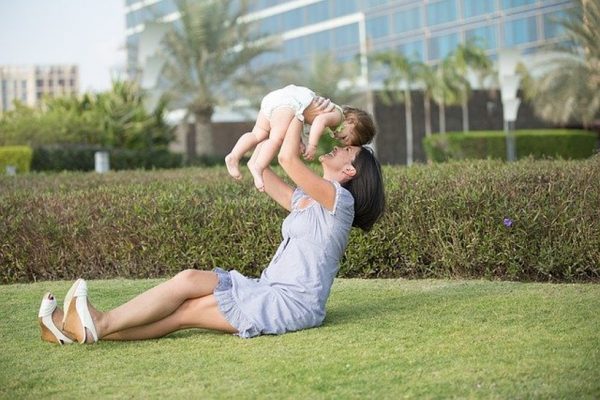Tips to Keep Nails Healthy & Beautiful
Author: Sumana Rao | Posted on: November 15, 2018
« Yoga Poses To Help Rheumatiod Arthritis Natural Remedies for Acne »

This year on the occasion of Diwali – Festival of light, try preparing delicious athirasam at home. Athirasam also known as kajjaya is a traditional sweet of India. In Southern states of India this sweet is popular. It is made of rice flour and jaggery. It tastes very delicious and popular amongst all age groups.
Ingredients:
Method:
**Do not use newspaper to remove excess oil as newspaper ink will stick to athirasam and not good for health.
Cool and store athirasam in an airtight container or serve hot athirasam on festival occasion.

November is Mesothelioma awareness month. Mesothelioma is an aggressive, rare form of cancer. It develops in the lining of lungs, heart and abdomen. According a report by CDC (Centers for Disease Control, 2017) 2,400 to 2800 people diagnosed with mesothelioma in the US alone each year.
Who is at higher risk of developing mesothelioma?
People who have worked or exposed to asbestos have higher risk of developing this rare form of cancer. ! Exposure, inhalation or swallowing asbestos fibers. If a person comes in contact with asbestos while working or by other means, it can take 20-50 years to appear! Men are at higher risk of developing mesothelioma. It can affect their abdomen, lungs, heart and testes.
Is there a cure?
As per Mesothelioma experts, the life expectancy of patients who suffer from this cancer, is poor as there is no cure for the disease. Key factors that play role in chance of a patient survival are – cell type, stage of the disease and location of tumor(s). Other factors like patients age, overall health also play crucial role in prognosis.
Types of Mesothelioma:
Pleural Mesothelioma: It is the most common type of mesothelioma and is caused by the inhalation of asbestos fibers. Every year nearly 2500 people are diagnosed with pleural mesothelioma in US. Asbestos is the definitive cause. After diagnosis and cancer treatments life expectancy of patient can be average 6 to 12 months.
Symptoms: Symptoms of pleural mesothelioma might appear anywhere from 20 to 50 years. Asbestoses fibers will stick to lungs during exposure causing inflammation and scarring overtime. As scarring worsens tumors develop and person will have problem in chest and respiratory system. Pleural effusion or fluid buildup in pleural cavity is one of the most common system. Excess fluid interferes with lung and other neighboring organs functions.
Chest pain, shortness of breath, fluid in lungs, dry cough, weight loss, fever, fatigue and night sweats are some of the symptoms.
X-Ray, CT scans, PET or MRI helps to find potential tumors.
Peritoneal Mesothelioma: It is found in peritoneum membrane of abdomen. It is the second most form of mesothelioma type. This type of mesothelioma is very rare. Survival rate of patients is better due to new treatments like hyperthermic intraperitoneal chemotherapy.
Cell type, tumor size, stage of cancer, gender and age plays role in survival of patients.
Symptoms: Inhalation and ingestion of asbestos fibers results in lodging of the fibers in peritoneum causing irritation scar tissue. Damaged cells develop tumors.
Abdominal pain, swelling, anorexia and weight loss, fluid in peritoneal cavity, night sweats, blood clotting, fever, intestinal obstruction, inflammatory lesions are some of the symptoms.
Diagnosis is by CT scans, X-rays, blood test (to rule out the other conditions), biopsy.
Pericardial Mesothelioma: Extremely rare form of mesothelioma. Cancer develops in pericardium membrane around the heart. Prognosis of this cancer is extremely poor and in most cases autopsy reveals the cause of death! Each year about 50 people are diagnosis with this type of mesothelioma.
This type sometimes forms secondary tumors in the body. Pericardial mesothelioma has the worst life expectancy and it could be up to 6 months. Very few cases so far reported on this type of cancer. Stage, cell type, age and gender play crucial role in survival. patients who suffer from this experience metastasis or adenocarcinoma.
Symptoms: It takes many years for symptoms to appear. It develops in between two layers of delicate membrane around heart. Researchers are unsure how the asbestos fibers reach the heart membrane. Tumors thickens the membrane and limit the function leading to improper heart functioning.
Chest pain, night sweats, irregular heartbeat, fluid collection, difficulty in breathing, heart murmurs, low BP, heart compression, inflammation of pericardium are symptoms.
Diagnosis of this cancer type is difficult. CT scan, x-rays might help to find pericardial effusion or any visible tumors. Biopsy is correct way to find the disease.
Treatments:
Like other cancer types, mesothelioma treatment depends on stages (1 to 4). For all mesothelioma standard treatments are surgery, chemotherapy, and radiations. Newer treatments are part of research and clinical trials and might be available for patients who does not respond to conventional therapies.
Some patients may show improvement and their life expectancy might improve significantly after receiving the treatments.
Mesothelioma is a rare type of cancer. If you or your close ones who worked with asbestos or in the close vicinity of asbestos and show above symptoms, then talk to your doctor. Your doctor will recommend you what should be your next step.
References:
https://www.cancer.org
https://www.cancer.gov/types/mesothelioma
https://www.maacenter.org/mesothelioma/
Image credit: Image by oracast from Pixabay (Free for commercial use)

Young children and toddlers look forward to spending time with parents. If you see, these young children prefer playing with parents who make their playtime fun. When asked who your best friend is, many young children will say ‘my dad is my best friend or my mom is my best friend!
Playtime is when child expresses emotion, communicates, bonds, and learns a lot on several topics. Playtime plays a significant role in parent child bonding. Playtime helps in parent child bonding.
Parents might find it hard to engage child during playtime. The problem of keeping them excited and engaged is more challenging during school holidays. How to make playtime more fun for your child and be a best playmate? Here are few suggestions:
Being your child’s playmate makes your child’s little world happier. Children will learn invaluable lessons from playtime with parents. The fear of moving around, outdoors and people will go away. It also teaches discipline and importance of physical activity. Parents involvement in early childhood makes significant contribution in a child’s life. Be a good playtime partner and enjoy parenthood!
Image credit: Image by Neil Dodhia from Pixabay

Glyphosate contamination in pulses ?! Yes, says reports!! Recently glyphosate herbicide traces were found in pulses imported to India. The Food Safety and Standards Authority of India (FSSAI) has asked imports division to check consignment of pulses for herbicide presence. In order to test the contamination FSSAI has directed officers to instruct regional laboratories to test glyphosate presence while testing for other contamination parameters. The results have to be shared with FSSAI every 15 days says the order dated October 12th!
According to FSSAI, there is a possibility of higher level of glyphosate residues present in pulses and cause adverse health conditions in consumers.
Looks like a bit of glyphosate is in everyone’s body!
What is glyphosate? Glyphosate is a chemical that kills weeds by blocking an enzyme that takes part in synthesis of amino acids. Glyphosate is manufactured by Monsanto, a US based Company and is a popular selling herbicide element also present in Roundup. It was considered to be safe to use till 2015. Later World Health Organization’s IARC classified glyphosate as possible human carcinogen. There are many reports suggesting glyphosate is responsible for cancer conditions in humans. Recently in California, a gardener who is suffering from cancer won 289.2 million in law suit filed against Monsanto! Many countries have banned use of roundup. Traces of glyphosate reported in ground water too.
When ingested in copious quantities glyphosate is considered to be highly toxic for human health. It can affect overall health by harming immune system. It might even disrupt absorption of minerals and vitamin nutrients.
Even though India is the largest producers of pulses, to meet the demand it imports pulses from other countries around the world. In the year 2017, India purchased pulses worth of USD 2696 million!. Countries from where India imports pulses are Australia, Canada, Maymnar, Russia and Ukraine.
Maximum residue limits (MRLs) for glyphosate in pulses not yet specified in Food Safety and Standard Regulation, 2011. For now, labs are advised to follow the MRL for glyphosate as specified in Codex Alimentarius, (a joint committee set by the WHO and Food and Agriculture Organization -FAO) standards with regards to import clearance. Codex can upgrade the MRL of glyphosate of pulses from time to time!
The MRL for glyphosate specified for few commodities are:
“This is a small step in the right direction”- Says Kavitha Kuruganti of Alliance for Sustainable and Holistic Agriculture. Testing of Indian samples is needed given the amount of illegal use of glyphosate in the country.
In India, glyphosate used as weed killer. Despite its known ill effects farmers are not ready to give up on glyphosate. In fact, the use of glyphosate in India is restricted to tea plantations. It has been reported that farmers are handling it liberally without proper directions. Another reason to use roundup is, wide spread labor problem in Agriculture and farming. Manual weeding is very expensive, and costs go up almost three times. According to Directorate of Plant Protection, Quarantine and Storage in India this herbicide sale has gone up! Of the dozen formulations available in India, the most popular one is Roundup the sale of which increased by 9% in 2016-17 as per Monsanto’s annual report.
As consumers we should be aware of the quality of the food and must know where it is coming from. Take maximum precautions to wash pulses, rice and other types of grains before using similar to fruits and vegetables. Washing might take some of the residues that is present on the surface. If you are concerned about health and sources of the food, try going organic. The more we buy organic, demand for organic increases and costs will come down!
References:

Wondering what to prepare for evening snack? Try cabbage pakoda today! Cabbage is known for its good health benefits and particularly for weight loss. It reduces constipation as it has good amount of fiber. In earlier recipe on cabbage salad we have explained good benefit of cabbage. “Cabbage is one of the fibrous and nutrient rich vegetable. Cabbage can vary in color from green to red and purple, and the leaves can be smooth or crinkled. With less than 20 calories per half cup cooked, it is a vegetable worth making room on your plate for. It is a very good source of manganese, dietary fiber, potassium, vitamin B1, folate and copper. Additionally, it also a good source of phosphorus, vitamin B2, magnesium, calcium, selenium, iron, pantothenic acid, protein and niacin.
Cabbage helps to relieve constipation. Cabbage consumption in any form is good for health – prepare salad, soup, sambar, curry or pakora using cabbage – not only it tastes good, it has positive effect on the body”
Cabbage pakoda is a good evening snack and good item for parties. Frying cabbage pakoda takes little extra time than regular onion or vegetable pakoda. But it is worth trying.
Cabbage pakoda
Ingredients:
Method:

Salt has several other benefits apart from adding to get taste in the food.
Salt helps in getting clear skin and healthy look.
See yourself-
Image credit: Photo by Lorena Martínez from Pexels
(Free for commercial use)